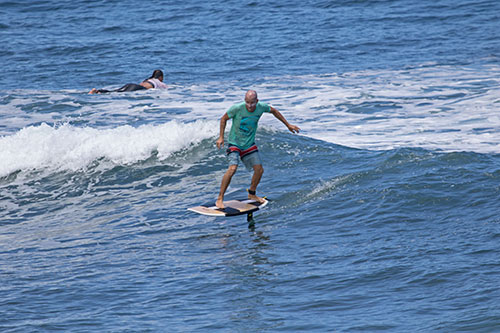Have you guys already read the article about the wing overload yet? If not, then catch up right here, because when I counted all the companies that make wings, I thought I came up with a lot.
After my Youtube video on the subject, my colleague Devon Manz of NY Foilig a.k.a. Wake Thief contacted me and gave me his list of companies that produce foils.
I thought that I had not counted badly with 36 companies, but more… much more were added. We now have a list of 52 companies, mainly in Europe and the USA.
If we were on the stock market we would speak here of a bubble, a worldwide Foilhype everything jumps on the train with what can. Clearly foils can be screwed under any board that moves on the water. There are many options and the customer can choose until the end.
Defensively calculated, then each company has on average about 3 masts and 3 front wings and say 3 back wings (stabilizer) plus 2 fuselages. These figures alone make one almost dizzy.
Let’s do some numbers:
3 Masts x 3 Front Wings x 3 Stablizers+ 2 Fuselages = 54 variations
If we extrapolate this to 52 companies, we arrive at a selection of 2808 different variations, which is certainly no lack of choice.
It was a bit of work to find all of them. The order in the list is random:
- Starboard (Thailand)
- Armstrong (New Zealand)
- Indiana (Switzerland)
- vayu (Germany)
- Naish (Hawaii)
- Fanatic (Germany)
- Gofoil (Hawaii)
- Axis (USA)
- NSP (Thailand)
- Takuma (France)
- Gong (France)
- Sroka (France)
- The Hyrdofoil Company (Hawaii)
- F-One (France)
- SPG (Süd Afrika)
- Levitaz (Austria)
- Moses (Italy)
- Ride Engine (USA)
- Lift (Puerto Rico)
- Liquid Force (USA)
- Slingshot (USA)
- Cabrinaha (Hawaii)
- Waydoo E-Foil (China)
- Aztron (China)
- Phase 5 wake foil (USA)
- Core (Germany)
- North (USA)
- UniFoil (Australia)
- Neil Pryde (Hong Kong)
- SIC (Hawaii)
- RRD (Italy)
- flite (USA)
- TAAROA (France)
- PWR Foil (E-Foil) (France)
- Gaastra (Germany)
- Kold Shapes (Germany)
- Horue (France)
- Ensis (Switzerland)
- Delta
- Cloud9 (USA)
- KeNalu (USA)
- Blue Planet (Hawaii)
- F4 (USA)
- Zeeko (France)
- Ketos (France)
- Shinn (Poland)
- Stringy
- Mikes Lab (USA)
- Chubanga (Italy)
- LP Foils (USA)
- Crazy Foils (USA)
- CrazyFly (USA)
I think you should not be demotivated by the overwhelming choice. If you are a beginner, there are only a few key points that you should consider. For example, I started with an old set-up and a rebuilt surfboard. From there I worked my way up.
The three phases of how to approach the topic (from my experience)
Phase 1: The beginner

- Education (watch videos)
- Talk to people who are in the sport
- Borrow gear (renatl or beginner course)
First experience: How many times did I fail? Old set up budget $ 450.-
Experience: If you are a beginner in something, the material on which you learn plays a secondary role. The main thing is to start developing a feeling for it.
Phase 2: The progressing beginner

- Basic knowledge
- Knowing your gear.
- Understanding flight characteristics
- Controlling your flight.
- Now think about new gear and spend money. (Better material will help you to make faster progress now. Of course, if you are rich, you can buy good material right away).
Finally progression: Converted mini surfboard still on old gear.
Phase 3: The advanced
- State of the art gear
- Progression speeds up thanks to better gear
- Starting to understand how the gear impacts the flight
- Great gear knowledge
Gear facts:
- The more parts the bigger the torsion.
- Aluminum masts are heaver than carbon masts
- Hollow masts take on water.
- Carbon is better than aluminum but its pricey.
- Shorter masts are better for beginners.
In case you are not quite sure what to do with a foil in your land locked area. Watch this video.

